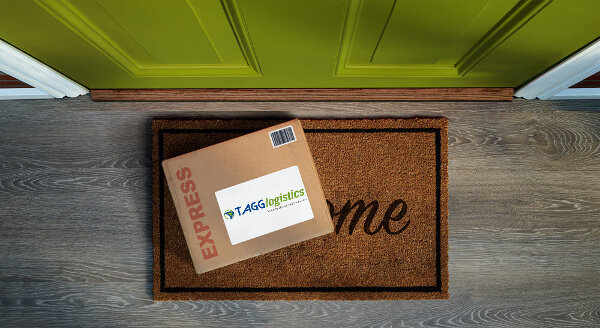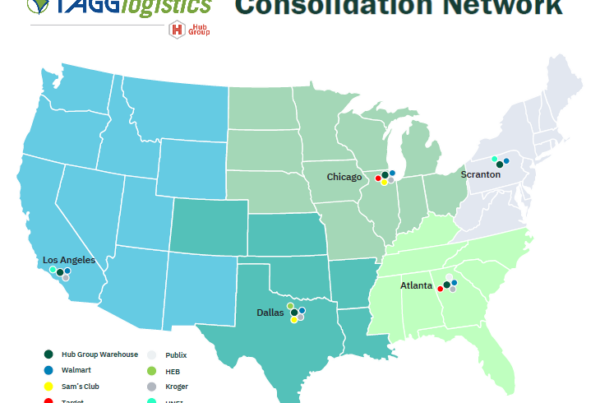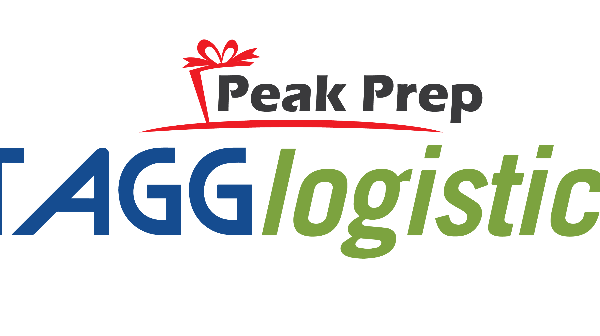Routing Guides
Fulfillment and Distribution in a Routing Guide Environment
What is a Routing Guide?
Routing guides are published by retailers for manufactures and wholesaler/distributors to establish a set of rules and requirements when fulfilling orders and shipping product to the retailer’s location or distribution system. If this guide is not followed exactly, the retailer can deduct a percentage of the invoice, percentage of the purchase order or a set amount from their remittance as a penalty.
History
Routing guides first surfaced as retail chains began to broaden their geographic reach through more locations, and simultaneously increased the variety of products they offered within their stores. This increase of stores and vendors created a logistical challenge as product needed to be efficiently routed to various locations but was shipped, labeled and packed in an infinite variety of ways. Think about a Walmart. Imagine how many different vendors they must coordinate with to stock the shelves of a single store. Then imagine adding hundreds then thousands of stores. It is easy to realize the need for product being delivered to their stores and distribution centers to arrive in a uniform manner – packaged, labeled and shipped the same – no matter who the vendor is. To achieve this, retailers created a document for vendors that details how they want product to arrive; the Routing Guide.
Sounds reasonable and straight-forward right? As a retailer getting product from hundreds, if not thousands, of different vendors, you want it all to arrive in a uniform fashion so you can easily distribute to your stores and stock your shelves. But now lets look at it from a vendor point of view. Say you just landed a sale to Walmart. You get the purchase order, spend time to learn the routing guide and have all your product packaged, labeled and shipped exactly how the routing guide dictates. Things are good and your fulfillment is flawless, then you land a purchase order from Target, then Lowe’s and then Walgreens! Sales are great, only they have routing guides too. Furthermore, their standards within those routing guides are different than Walmart’s and are all different from each other. Each of your retailers now needs product packaged and labeled differently, creating a fulfillment nightmare.
As you can imagine, it is a significant challenge for vendors/manufactures to fulfill and distribute orders to multiple retailers while staying in compliance with detailed routing guides. Vendors often found themselves understaffed to learn all the specific requirements and undercapitalized to pay for the variety of packaging and labeling needs. It got easy to skip corners and fulfill orders not completely to the routing guide specifications. Retailers needed a solution to force compliance. The answer was chargebacks. In a purchase order from a retailer, it is often stated that if a routing guide is not followed exactly, the retailer can deduct a percentage of the invoice, a percentage of the purchase order or a set amount from their remittance as a penalty. This penalty can be assessed to each specific infraction and can add up to hundreds, even thousands of dollars.
The Solution to Routing Guides
If you need to fulfill and distribute orders to multiple retailers your choice is simple. Either invest resources in personnel and systems to gain the capabilities to ship in accordance with routing guides or outsource to a third party logistics (3PL) firm who is familiar with routing guides to help you fulfill orders. 3PLs manage the fulfillment and distribution needs of a variety of clients and therefore, learn the routing guide requirements for multiple retailers. As a vendor, you can leverage this knowledge and use your 3PLs capabilities to more confidently sell to multiple retailers. Outsourced fulfillment and distribution should be approached as a partnership where both the vendor and the 3PL work together to understand the routing guides and avoid chargebacks. A strong 3PL should also have the capabilities of repackaging, labeling and managing information flow according to a retailers’ routing guide and EDI standards. In essence, by outsourcing your warehouse, you have expanded your fulfillment capabilities allowing you to expand your sales!
For those selling product through retailers, routing guides can be a necessary evil of doing business. For those same retailers, routing guides are essential to be able to operate multiple locations and provide product from a large variety of vendors. Supply chains can be complex and require retailers and vendors to work together to synchronize the flow of product.
Excerpt from a Sample Routing Guide
Below is a small excerpt of the Vendor Routing Guide for The Home Depot. (This information was provided by the retailer through their web-site and is only a small sampling of the types or requirements The Home Depot or other retailers place in their routing guides):
This routing guide and shipping guide has been developed for domestic, North American suppliers who ship to Home Depot, its subsidiaries and/or affiliates within the US, Canada, and/or Puerto Rico. All sections of this guide apply to all suppliers regardless of their FOB terms.
All transportation costs, storage fees or other expenses incurred by The Home Depot because of the supplier’s non-compliance with the terms and conditions of the Supplier Buying Agreement shall be charged to the supplier. Additionally, any carrier detention charges will be charged back to the supplier.
Listed below are general instructions to follow when shipping merchandise to Home Depot.
- Do not split POs between shipments. All cartons associated with one PO must be on a single shipment.
- POs cannot be mixed in a carton or master carton/repack.
- All POs for all merchandising departments that are shipped on the same day to the same destination (THD store, DC or TF) must be on a single Bill of Lading.
- Ship one Bill of Lading per store for shipments going to offshore stores (AK, HI, PR, USVI and Guam). Offshore shipments (except prepaid small package shipments) must go through the appropriate consolidation center and include all applicable paperwork.
- Expedited shipments: All priority shipment requests that require additional freight charges over and above normal service (such as air freight or expedited-ground) must be approved prior to shipping. Any expedited shipment coming from a vendor (inbound shipment to The Home Depot) will require buyer, merchant, or store manager approval.
- If the request for expedited shipment originates from a store it will require the store manager’s approval.
- If the request for expedited shipment originates from a source other than a store (e.g. merchant, host order, etc) it will require buyer or merchant approval.
- Any expedited shipment coming for DC, TF, or other HD facility (outbound shipment from The Home Depot) will require approval from the manager of the facility.
- If your facilities are closed for extended times other than national holidays, please notify the appropriate product merchant 90 days before the closing to secure order placement and to guarantee delivery.
- Home Depot stores are closed on Thanksgiving and Christmas. Please plan your deliveries around these holidays. Keep in mind; receiving will be heavier than usual before and expecially after the respective holidays.
- Do not deliver merchandise to the stores on store inventory days, contact the receiving manager or store manager for a store inventory schedule.
- LTL drivers are required to observe and validate unloading. TL drivers are required to tailgate the load.
- The trailer seal must be intact upon arrival at Home Depot and Home Depot must confirm it is intact. Home Depot stores are closed for Thanksgiving and Christmas. Please plan your deliveries around these holidays. Keep in mind; receiving will be heaver than usual before and especially after the respective holiday.
- Do not deliver merchandise to the stores on store inventory days, contact the receiving manager or store manager for a store inventory schedule.
- LTL drivers are required to observe and validate unloading. TL drivers are required to tailgate the load.
- The trailer seal must be intact upon arrival at Home Depot and Home Depot must confirm it is intact.
All Suppliers regardless of freight terms (Prepaid or Collect) are required to ship from the location specified in the Supplier Buying Agreement (SBA). Suppliers with multiple ship origins must ship from the SBA stated ship origin which is closest/most cost optimal to the HD destination on the purchase order. Failure to comply with this will result in supplier charge backs.
Home Depot will not pay any accessorial charges on prepaid shipments. Any charges such as notification, storage, reconsignment, inside delivery, sorting/segregating, etc. will be the sole financial responsibility of the vendor. The Vendor Routing Guide is meant to serve as a comprehensive tool establishing how to interface with your company. The information contained in this document reflects your commitment to reduce the cycle time in transporting your product through the supply chain. This requires a focus on controlling unnecessary freight and labor expenses. The instructions contained in this document should be clear and given careful consideration as to standard business practices used to transport materials today. Compliance to these policies and procedures will ensure a healthy and profitable relationship between your and The Home Depot.



